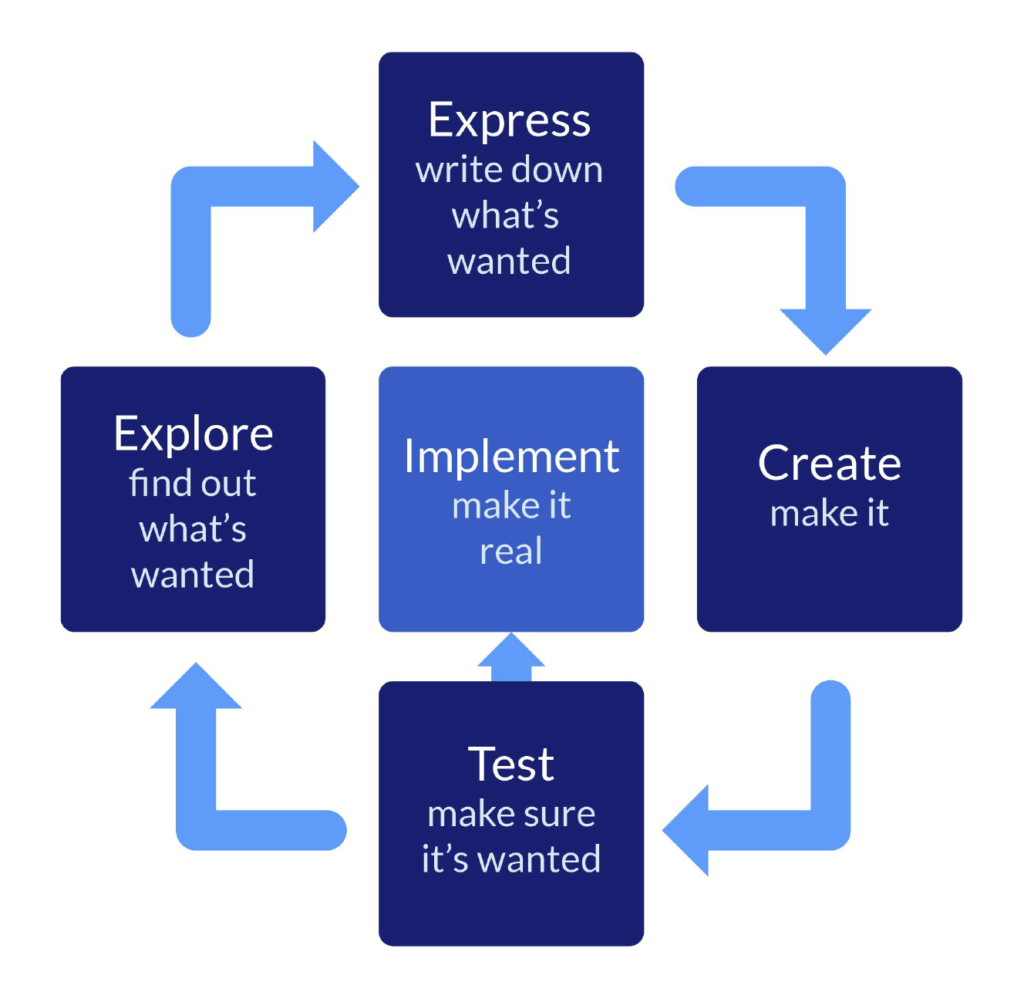Listen up folks, for I am about to unveil the sacred trifecta of my design mojo. Three distinct paths that I use to navigate through the choppy waters of design. The first, my friends, is the ideal approach. This baby only sees the light of day when we’ve got time to burn and money to blow. The second, now this one’s a sly devil, it’s for when we’re short on both time and moolah, and even access to the elusive user is a challenge. But hey, we’ll make it work, won’t we? And then there’s the third. The one that separates the women and the girls, the quick and the dead, the heroes from the zeroes. This is the design process for when you need to make it happen yesterday. Strap yourselves in, my friends, because we’re in for a wild ride.

When time and/or money aren’t an issue:
- Gather research: Conduct interviews with users and ask to shadow them for a period. Ask for demonstrations. Find out what is most important for them to know and be able ot use. Do competitive research. Look at existing solutions for similar problems. Artifacts to create and keep: Notes, recordings, pictures, links, tables/graphs
- Organize results of research: Make the research digestible by grouping common problems and challenges as well as potential solutions and opportunities. Artifacts to create and keep: Simplified notes grouped into categories, explanations of existing solutions to problems, personas, visual aids (pictures, tables/graphs)
- Together with the team go over the research and ideate solutions. Artifacts to create and keep: Bare-bones storyboard of basic UX, notes and potential edge cases
- Create user flows and decision trees based on the brainstorming session results, validate with the team, and create wireframes/prototypes based on these. Artifacts to create and keep: User flows, decision trees, wireframe prototypes
- Validate the wireframed prototypes with users (if necessary return to step 4) Artifacts to create and keep: Notes on any problem areas, recordings
- Adjust wireframes based on testing results: Following the notes from testing, make adjustments to the wireframes to smooth the user experience in any problem areas Artifacts to create and keep: Wireframe prototypes
- Re-validate wireframe prototypes with users (if necessary return to step 6) Artifacts to create and keep: Notes on any problem areas, recordings
- Apply final UI design to the wireframes Artifacts to create and keeps: finished design
- Validate finished design prototypes with users (if necessary return to step 8) Artifacts to create and keep: Notes, recordings
- Create full user paths with edge cases of final designs for ease of engineering implementation Artifacts to create and keep: Final designs arranged in full user paths with all edge cases accounted for
When you have less time and/or less money and/or don’t have access to users all the time:
- Gather research: Conduct interviews with users and ask to shadow them for a period. Ask for demonstrations. Find out what is most important for them to know and be able ot use. Do competitive research. Look at existing solutions for similar problems. Artifacts to create and keep: Notes, recordings, pictures, links, tables/graphs
- Organize results of research: Make the research digestible by grouping common problems and challenges as well as potential solutions and opportunities. Artifacts to create and keep: Simplified notes grouped into categories, explanations of existing solutions to problems, visual aids (pictures, tables/graphs)
- Brainstorm Artifacts to create and keep: Bare-bones storyboard of basic UX, notes and potential edge cases
- Create user flows and decision trees based on the brainstorming session results, validate with the team, and create wireframes/prototypes based on these. Artifacts to create and keep: User flows, decision trees, wireframe prototypes
- Validate the wireframed prototypes with the team (if necessary return to step 4) Artifacts to create and keep: Notes on any problem areas
- Adjust wireframes: Following the notes from testing, make adjustments to the wireframes to smooth the user experience in any problem areas Artifacts to create and keep: Wireframe prototypes
- Apply final UI design to the wireframes Artifacts to create and keep: finished design
- Validate finished design prototypes with team (if necessary return to step 7) Artifacts to create and keep: Notes, recordings
- Create full user paths with edge cases of final designs for ease of engineering implementation Artifacts to create and keep: Final designs arranged in full user paths with all edge cases accounted for
When you know the problem the users are having and you need the solution yesterday:
- Create a wireframe of what you think the solution could be Artifacts to create and keep: Wireframes
- Validate the wireframed prototypes with the team (if necessary return to step 1) Artifacts to create and keep: Notes on any problem areas
- Adjust wireframes: Following the notes from testing, make adjustments to the wireframes to smooth the user experience in any problem areas Artifacts to create and keep: Wireframe prototypes
- Apply final UI design to the wireframes Artifacts to create and keep: finished design
- Validate finished design prototypes with team (if necessary return to step 4) Artifacts to create and keep: Notes
- Create full user paths with edge cases of final designs for ease of engineering implementation Artifacts to create and keep: Final designs arranged in full user paths with all edge cases accounted for